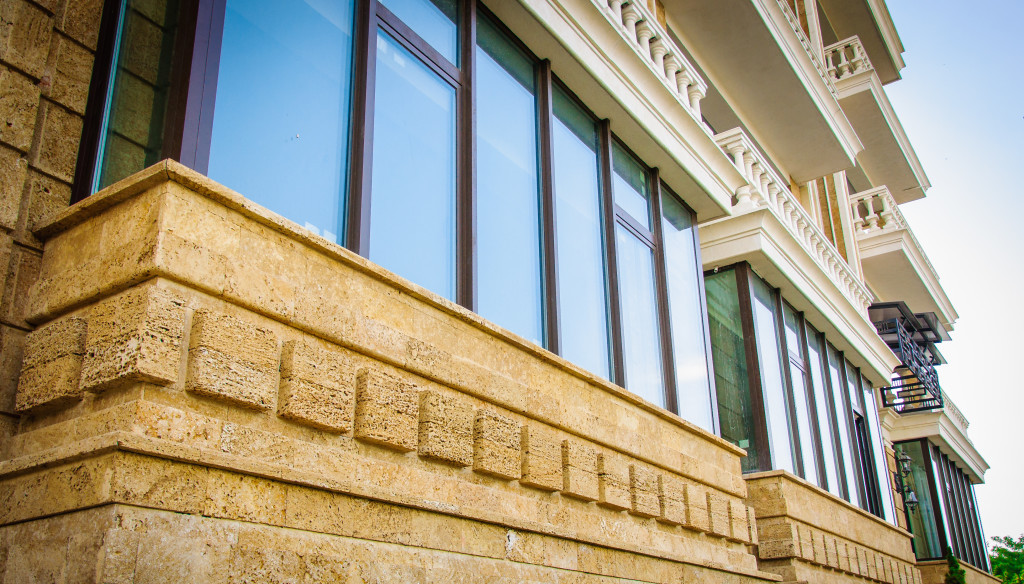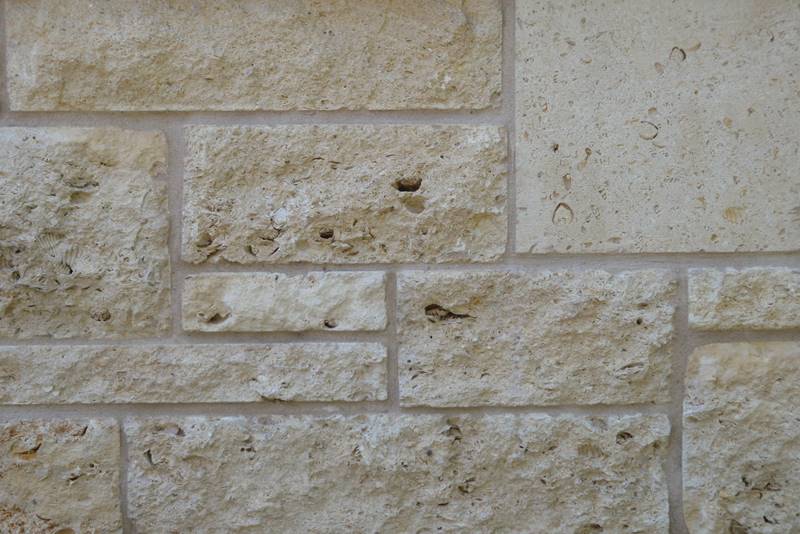Shell rock is a porous, not very hard stone with a light brown or reddish yellow color. Formed from shells of mollusks and other organisms living in the sea. Used in the construction of houses. For these purposes, blocks are cut in the form of rectangular parallelepipeds. Despite their light weight, the blocks are quite durable, so they can be used for the construction of load-bearing walls up to 3 floors high. Due to its porous structure, the shell rock holds heat well and has high sound insulation.
Shellfish Characteristics
This natural building material is quite dense and light. Its characteristics are higher than that of building materials that were created artificially. The thermal conductivity of shell rock is 0.3-0.8 W / m 2 , which is lower than that of foam concrete, frost resistance 25 cycles, the average density of the material is 2 100 kg / m 3 , water absorption 15%. The size of a shell rock, as a rule, is 380 x 180 x 180 mm, and the average weight is 15 - 25 kg.
Due to the fact that this material is sold in the form of rectangular blocks, it is very convenient to use it in masonry walls.
Limestone Brands
Depending on the characteristics, the stone is divided into the following brands:
- Brand M15. The stone is light, has a large porosity and an insignificant indicator of density. The size of the shell is 380 x 180 x 180 mm, it weighs 15 kgf / cm 2 , the color is light yellow. Used for the construction of houses no higher than 2 floors.
- Brand M25. It has a slightly higher density than the previous one. If it falls, it does not break into pieces. The dimensions of the shell are 380 x 180 x 180 mm, weight - 25 kgf / cm 2 , light color.
- Brand 35. This brand of stone has the highest rate of strength. It almost does not include sand. The dimensions of the shell are the same as in previous brands, weight 35 kgf / cm 2 , color - yellow-white. In addition to the construction of walls, it is also used for the construction of ground floors and foundations.
Shell rock in the construction of houses
To make the shell house stronger, it should be protected from moisture, the walls should be erected on a reliable foundation, and monolithic belts should be used.
This structure has both positive and negative sides. The pluses include:
- Shellfish is a completely pure material. During its formation, it was thoroughly saturated with iodine and sea salt, which will have a positive effect on the health of the residents of the house. Thanks to iodine, it also protects against radiation and rodents will not live in it.
- It has low thermal conductivity. Such a house is warm in winter and cool in summer.
- High vapor permeability. This means that the walls in the shell house will “breathe”.
- The material is easy to process.
- Absorbs noise perfectly.
- A shell house is not flammable and does not sustain combustion.
- The material serves as a filter from harmful substances. Its porous structure absorbs harmful substances that enter from the outside.
- Frost resistance. Blocks can withstand temperatures up to -60 degrees.
- The material is light weight.
- Speed in construction due to the overall dimensions of the stone.
- On the walls of shell rock does not start fungus and mold.
- Attractive appearance. Blocks of stone can be placed seamlessly or under the joint. The walls look natural and ultra-modern.

Minuses:
- Relatively low bearing capacity. But it depends on the brand of shell rock. When building a house above one floor, you need to use blocks of the brand M25 and M35. If you correctly calculate the concrete and reinforcement, then a shell house can stand for 100 years or more.
- Not very reliable retention of fasteners. This applies only to blocks of the M15 brand, others in this sense are quite reliable and calmly withstand kitchen cabinets with their contents. This problem can also be easily solved using modern fasteners.
- The exact geometry of the blocks is missing. When mining stone in quarries, the exact overall dimensions are not always obtained. There may be a deviation of 1-2 centimeters. But this rarely happens, and if the mason has experience in masonry, then he will easily fix this problem.
- Water absorption. You can get rid of this minus if you properly protect the walls from the outside - plaster, treat with special solutions that repel moisture, insulate. Before proceeding to the interior decoration, it is necessary to make insulation and complete decoration of the facade. If this is not done, then in winter tenants will have tangible expenses for heating the house and feel damp indoors.

Cost of a shell house
Many people plan to build mansions. They are interested in the question of how much it costs to build a house from a shell rock.
Some construction companies promise to build such a house at a price of 7,500 rubles per square meter. Others say that this is a very low price. If you believe the first, then a box of this natural stone will cost about $ 25,000 - $ 37,500 (1,550,000 - 2,300,000 rubles).
It is clear that this amount does not include decoration, roof, communications, electricity, windows, doors and much more.